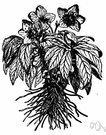Helleborus orientalis flowers from February to April, coinciding with Easter along the way, giving rise to the popular name Lenten rose.
QWHAT natural treatments will help my fungi-ridden
Helleborus orientalis? Julia AHELLEBORUS orientalis (lenten rose) is susceptible to leaf spot, a fungal disease.
DAVID DOMONEY ANSWERS YOUR QUESTIONS QWHAT natural treatments will help my fungi-ridden
Helleborus orientalis? Julia AHELLEBORUS orientalis (lenten rose) is susceptible to leaf spot, a fungal disease.
Known as the Lenten rose,
Helleborus orientalis is a fine sight in early spring when little else in the garden gives colour.
The Lenten rose
Helleborus orientalis starts to flower later as its name suggests, and many hybrid varieties have been bred from this, resulting in a selection of petal colours and shapes.
The Lenten rose (
Helleborus orientalis) is really not a rose but is a shade-loving perennial.
He tells me it is Lenten Rose,
Helleborus orientalis, a garden perennial.
I especially like
helleborus orientalis too, Although they flower a little later, the Lenten roses, in pink, white and red, are hardier and the flowers more prolific.
Other plants to be seen in March are Forsythia, Chaenomeles,
Helleborus orientalis (Lenten rose), Ribes sanguineum (Flowering currant), Primula veris (cowslips) and of course daffodils.
Helleborus orientalis is a perennial hardy in Zones 4-8.
Helleborus orientalis has a fair degree of resistance to this infection, and it seldom affects the vigour of the plants or stops them flowering.If you have a gardening problem, write to Gardenlife at Daily Record, One Central Quay, Glasgow G3 8DA
Special touches can be added to the winter garden by planting small winter flowering plants, such as Lenten rose (
Helleborus orientalis), winter aconite, and crocus.
 Helleborus orientalis - slightly hairy perennial having deep green leathery leaves and flowers that are ultimately purplish-green
Helleborus orientalis - slightly hairy perennial having deep green leathery leaves and flowers that are ultimately purplish-green